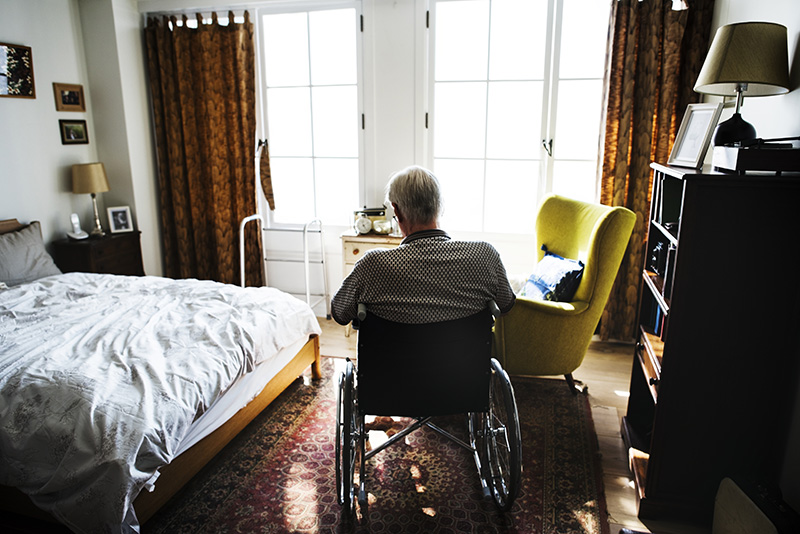
At least half of the deaths from COVID-19 have been among nursing home residents—those most likely to be elderly and to have underlying health conditions.
Shouldn’t our first priority be to protect these vulnerable seniors and the workers in these facilities?
Apparently not in New York.
There has been too little coverage of an order signed by New York Gov. Andrew Cuomo requiring nursing homes to accept those recovering from COVID-19, even if they still might be contagious, allegedly to keep hospital beds open for new patients, but clearly contributing to the likelihood the nursing home patients and staff would become hotbeds of infection.
The governor issued a state mandate in March saying, “No resident shall be denied re-admission or admission to the NH [nursing home] solely based on a confirmed or suspected diagnosis of COVID-19. NHs are prohibited from requiring a hospitalized resident who is determined medically stable to be tested for COVID-19 prior to admission or readmission.”
Employees of these facilities were aghast and, at first, weren’t believed when they reported the orders they were receiving. The governor now is under fire for the decision, with some calling for an investigation.
New York plans to “double down on the absurd,” Naomi Lopez of the Goldwater Institute writes, with the state now “considering using senior centers as testing sites.” Don’t do it!
New York’s disproportionately high incidence of death is driving national policy, keeping the economy closed with huge repercussions for millions of unemployed workers. We should instead be refocusing on widespread testing, isolation of those who are infected, and protecting the most vulnerable so we can reopen the economy, as Galen Senior Fellow Doug Badger has been advocating all along. See his latest article for The Daily Signal: “Is Sweden’s COVID-19 Approach the Right One?”
The Foundation for Research on Equal Opportunity produced a new analysis which shows that nationwide, “Nursing Homes Account for Two-Fifths of U.S. Deaths from COVID-19.”
With New York’s underreported data excluded, Freopp research fellow Gregg Garvin’s figures show half of all deaths are from those in nursing homes, a number consistent with international data.
“[I]t is clear that the most underappreciated aspect of the novel coronavirus pandemic is its effect on a specific population of Americans: those living in nursing homes,” according to Garvin.
More evidence: A summary of deaths in Pennsylvania as of yesterday shows that two-thirds lived in nursing homes, personal care homes and assisted living residences. The Commonwealth’s Secretary of Health reports the average age of those who have died from COVID-19 is 79, and 95% had comorbidities.
“The nursing homes, we said from day one, are the most vulnerable place,” NY Gov. Andrew Cuomo said on Tuesday, clearly trying to defend the decisions.
He’s right: Protecting and better caring for those in nursing homes must be the first priority, despite growing evidence that should have been the priority all along.
Next, we should focus on those states with the most concentrated outbreaks. The Daily Signal reports that “the distribution of the cases and deaths has remained heavily concentrated in a small number of states, and among a small number of counties within all states.
“Just five states—New York, New Jersey, Massachusetts, Illinois, and California—account for 54% of all of the confirmed cases in the U.S. and 61% of all coronavirus deaths.” Heritage analyst Norbert Michel’s finds that 90% of the counties in the U.S. have had fewer than 15 COVID-19 deaths.
While the numbers could, of course, change as the economy re-opens, containing the spread clearly means focusing on the hotspots—both in states and localities with the largest outbreaks and in the nursing home facilities that can become death traps.
- The Heritage Foundation’s National Coronavirus Recovery Commission has produced a reopening plan, “Saving Lives and Livelihoods: Recommendations for Recovery.”
- Freopp offers comprehensive recommendations in “A New Strategy for Bringing People Back to Work During COVID-19,” based upon realistic assumptions about treatments, vaccines, and the vital need to reopen the economy.
The House of Representatives is still trying to figure out how to get back to work, but leaders already writing Bill #4 to spend hundreds of billions of dollars on additional coronavirus relief.
Of all of the bad ideas being considered, the worst is using Medicaid as the conduit for funding for the states, as House Democratic leaders are recommending.
We released a new paper this week by Senior Fellow Brian Blase that explains this would exacerbate Medicaid’s already-serious problems of distorted funding allocations and provide a huge incentive for states to keep their unemployment rates high, delaying the recovery.
The title of his paper says it all: “Funneling coronavirus relief to the states through Medicaid will aggravate problems with the program and delay the economic recovery.” Brian shows Congress should find a new vehicle to get relief to states, and he offers a series of recommendations.
For a Cliff’s Notes version, see his Wall Street Journal piece from Tuesday, “A New Recipe for Waste in Medicaid.”
